Jim Poling Sr.'s Blog, page 10
May 18, 2022
I try to be Mr. Nice with my critter neighbours at the la...
I try to be Mr. Nice with my critter neighbours at the lake. It is becoming more difficult, however. Much more difficult, especially this spring.
I feed and comfort the little birds: the sparrows, nuthatches and chickadees. And, I don’t shout at the bullying blue jays and crows when they horn in, chasing the hungry little guys away from the feeders.
I’m also calm and gentle with the chipmunks. Obviously, they are not affected by COVID, because they have multiplied by the thousands during the pandemic. They have brought their relatives and friends to my place to dig holes wide and deep enough to swallow an 18-wheeler.
I understand they must dig for their tunnelling systems, but why any tiny rodent wants to claw through hardpan and packed road gravel is a mystery to me. There are hundreds of acres of soft, easy digging soil around my lake.
Playing Mr. Nice is hardest when it comes to squirrels. The black squirrels and their grey cousins are relatively respectful and law-abiding. They don’t chatter at me when I catch them trying to steal something.
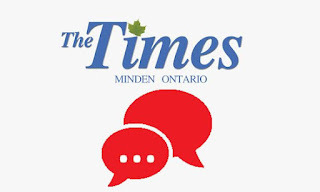 Red squirrels, however, are unredeemable career criminals. They respect no property or possessions. When I try to talk to them about leading more and productive lives, they mock and taunt me.
Red squirrels, however, are unredeemable career criminals. They respect no property or possessions. When I try to talk to them about leading more and productive lives, they mock and taunt me. Two of their cousins, red flying squirrels, chewed their way into my place a few years ago.
When they couldn’t get into the food cupboards, they chewed – totally out of spite – a trophy lake trout I had mounted on the wall.
Last month I discovered that red squirrels tried to destroy my new car. I brought it in for routine servicing and a tech came running into the customer waiting room with bad news. The red squirrels had started packing engine spaces with acorns. The cleanout cost me $60.
When I returned home later in the day, two red squirrels were sitting in a tree beside my parking spot. They pointed at me and began chattering and laughing.
Squirrels never seem to have enough places to store their acorns.
This spring, I decided to tidy up my ATV shed. I have a vacuum there and sometimes the hose is plugged into the blower end instead of the suctioning end. This day the hose was on the blower end and when I turned the power on, it began raining acorns.
Raccoons enjoy hanging around my place and I try to be Mr. Nice with them. It’s not easy because they are sneaky and come at night. They get into the bird feeders, not just taking a snack but tearing them down and carrying them off into the woods.
I’ve taken to trapping them – in safe and comfortable wire cages, of course. I spray their tail tips with fluorescent orange paint and release them into a far-off Crown forest.
I’m waiting for the morning when I look out and see a cage occupied by a raccoon with an orange tail.
This spring I received the ultimate insult from my critter neighbours.
Every fall I unhook my dock and tow it down the shoreline and into a protected bay where it will not be damaged by shifting ice. Every spring, I tow it back and reattach it to the shore.
Bringing it back this year, I noticed it was floating very low on one end. I took a crow bar and pulled off some boards to check the floats.
What a shock! Two floats were gone, and so were the boards that held them in place. All that remained of the holding boards were gnawed stubs – the unmistakable chew marks of beaver.
Sometime during the winter, beavers had chewed away the wooden supports, somehow removed two Styrofoam floats and created a cave-like space where they had started to build a comfortable home.
It took several hours and some money to return the dock to its useful state. When the repairs were complete, I sat down exhausted and thought: I must stop being Mr. Nice.
Later, after a few refreshments, my thinking changed. My critter neighbours were here first and I was the intruder.
So, I guess I’ll continue to play Mr. Nice and simply put up with their antics.
May 11, 2022
The abortion debate has flared into rage again in the Uni...
The abortion debate has flared into rage again in the United States, spilling of course, into Canada and elsewhere.
Much time, energy and money is spent arguing whether governments should allow women to terminate pregnancies. Wouldn’t all that time, energy and spending be better directed at lessening the chances of a woman having to make an abortion decision
For instance, improving sexual and reproductive health services would reduce the need to worry about abortions.
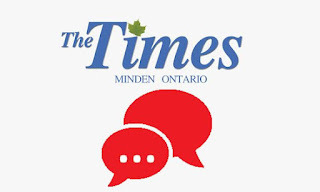
Here in Canada, provincial health plans typically do not cover most contraceptive drugs and devices. Many people have to rely on private insurance plans, sometimes available through their employers.
Single women, who have a high percentage of abortions, often do not have the higher-level jobs that provide such benefits.
Much can be done to improve work life for women who must work to feed their children. Many of these are single mothers, who number almost one million in Canada. Nearly one-third live below the poverty line.
You can chalk that statistic up to inequality. Earnings of single moms lag well behind that of men – roughly 82 cents to the dollar for the same job. The gap is even larger for racialized women.
Also, the median income of Canadian families led by single women in 2020 was about $49,000 compared with $101,000 for married couples.
Working single mothers need improved programs that will help them raise their children while doing their jobs. Many have lower-level jobs with unpredictable work schedules that make it difficult to take care of children. They also need satisfactory paid family leave and affordable quality daycare.
Affordable daycare is on the way. The federal government has made deals with the provinces to provide $10-a-day daycare.
In Ontario, which has some of the highest daycare costs in the country, the average daily cost for daycare is roughly $70, which is difficult to handle for a single mother earning food outlet wages. However, earlier this year the province signed on to the federal plan that will lower the cost of daycare to $10, but not until 2025.
The COVID-19 pandemic hit single mothers particularly hard. One study has shown that the employment rate for single mothers has not rebounded as pandemic restrictions have eased.
An analysis of Statistics Canada data found that the employment rate for single mothers with children under age six was down 36 per cent between February 2020 and the end of 2021. Employment of mothers with partners and children in the same age group was up 4.5 per cent.
No matter what laws governments pass to control abortions, they will continue to be done. The plain facts are that the majority of women seeking abortions are poor, or categorized as low-income, and feel they cannot afford to raise children.
The Guttmacher Institute, a global research and policy institution says 75 per cent of women seeking abortions are living below the poverty line or are categorized as low-income. It believes that a comprehensive package of essential sexual and reproductive health services, including contraception and safe abortion care, should be included in national health systems.
The World Health Organization (WHO) says that 73 million induced abortions take place worldwide every year. It includes abortions in its list of essential health care services.
Meanwhile the rekindled abortion debate continues to rage in the United States. It is a partisan debate that threatens to further tear the country apart.
The U.S. Supreme Court is expected to strike down the landmark 1973 Roe v. Wade decision, which said the U.S. Constitution protects a pregnant woman’s liberty to have an abortion without excessive government intervention. That decision basically made abortion legal in the U.S. but hard-line conservative groups have been trying for decades to get it reversed.
The Supreme Court’s decision on whether to strike down Roe v. Wade is expected at the end of next month or in early July. A leaked draft of the decision indicates it will strike it down, creating more massive unrest in a country that some people believe is already on the verge of another civil war.
May 4, 2022
They are on their way! You should be spotting them any da...
They are on their way! You should be spotting them any day now.
The last time I checked they were crossing Lake Erie and some areas of southern Ontario were reporting sightings.
The arrival of the much-admired ruby-throated hummingbirds will complete another miracle of nature. They have been flying for days to get here, travelling thousands of kilometres from their wintering grounds in Mexico and Central America. 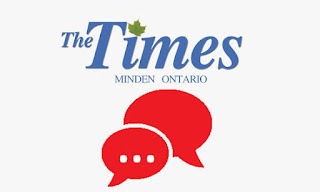 Many have had to cross the Gulf of Mexico to get here – an 800-kilometre non-stop flight that takes 20 hours. Then they have to navigate roughly 1,800 kilometres over the eastern United States before crossing Lake Erie into Canada.
Many have had to cross the Gulf of Mexico to get here – an 800-kilometre non-stop flight that takes 20 hours. Then they have to navigate roughly 1,800 kilometres over the eastern United States before crossing Lake Erie into Canada.
How something so tiny and so delicate can travel such incredible distances through winds, storms and fluctuating temperatures truly is a miracle. The average ruby-throated hummingbird is a mere nine centimetres long and weighs three grams, the weight of about three standard paper clips.
They might be tiny, but can be ferocious. Males use their needle-like bills to stab other males in fights for mates. Fights look like fencing, with the birds feinting, parrying and stabbing, sometimes knocking an opponent off its perch.
The Aztecs admired the beauty of these little birds but also saw them as bloodthirsty warriors. Huitzilopochtli, their god of war, was a hummingbird.
The hummingbirds’ unique bills also allow them to reach deep into tubular flowers to extract nectar. They need a lot of nectar to produce the energy needed for long migrations.
They need to eat every 10 or 15 minutes to fuel their supercharged little engines and consume as much as 12 times their body weight in nectar every day. To do all that feeding they visit hundreds of flowers every day.
During flight, a hummingbird’s wings flap up to 80 times a second, making them just a blur to the human eye. Those lightning speed wing flaps allow the birds to fly like helicopters, even upside down, often hovering in one place as they poke a bloom for nectar.
Hummingbirds are the only birds that can hover or fly backwards. However, they are not good on their feet. They can’t hop or walk very well because their legs are short and weak.
Their lifespan is three to five years, which seems long considering the extreme weather conditions they face during migrations, plus the predators and human-made obstacles that all birds face.
Hummers are great little birds to have around our places. They pollinate a wide range of flowering plants, carrying pollen on their beaks and feathers from one plant to another.
They are easily attracted to garden flowers and feeders. They favour the colour red and some people hang red ribbons on feeders, trees and other objects to ensure they come.
They will go to any bright colour but one theory is that they are partial to red because red flowers are where they find the most nectar.
All they need to make your place a favourite place is a nectar feeder, water source and places where they can perch when needed. Expert bird watchers say hummers are loyal and will return to a place every year if it has all the things they need.
They also advise to keep feeders well-spaced because hummers are territorial.
Nectar for feeders is basically sugar water – one part sugar to four parts water. Many people add red dye as an attractant, but the experts advise against this.
Red dye No.40 is known to cause cancerous tumours in rats and mice. It is one of the most common colour additives and is found in many foods and beverages, notably energy and sports drinks.
There have been claims that this dye impairs hummingbird reproduction and causes skin and bill tumours. There is no definitive proof that red dye is harmful to hummers, but also no proof that it does not harm them.
Anyone wanting to be better safe than sorry can simply use a non-coloured mixture of sugar and water and tie red ribbons to the feeders and elsewhere.
Just a little more sunshine and warmth and we’ll all be seeing them at our feeders. It will be great to have them back.
#
April 28, 2022
As we brace for a new bug season, I find myself hoping fo...
As we brace for a new bug season, I find myself hoping for a banner bug year.
Not for blackflies, mosquitoes, midges or wasps, but for dragonflies and their cousins, the damselflies.
A single dragonfly can eat anywhere from a couple of dozen to hundreds of mosquitoes
Every day, depending on what other insects are available. Unfortunately, they’ll also eat butterflies, which might leave them too stuffed to go after many mosquitoes.
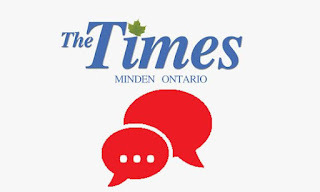
Dragonflies not only help us by eating biting bugs, they are entertaining. They are fascinating to watch as their two sets of translucent wings allow them to fly straight up and down, upside down or backwards.
They are among the earth’s oldest critters, believed to have evolved roughly 300 million years ago. They were much different back then, much larger and probably more ferocious. Some dragonfly fossils have been found with wingspans of up to two feet.
There is some disturbing news about their future. A recent assessment from the International Union for Conservation of Nature (IUCN) says that about 1,000 of the roughly 6,000 known species of dragonflies and damselflies are at risk of extinction.
Of those, 95 are considered critically endangered.
These insects rely on wetlands, ponds and lakes for life, and pollution and climate change are making life difficult for them. So is destruction of wetlands, which humans tend to see as messy things that should be filled in to allow more development.
Now there is research indicating that winter road salt leaching into roadside storm ponds is harming dragonfly populations. Both dragonfly and mosquito larvae develop in these ponds.
Dragonfly larvae have huge appetites and one healthy dragonfly larvae can consume 11 mosquito larvae in just two hours. That’s a lot of mosquitoes that will not become biting adults that drive us crazy.
The research indicates that dragonfly larvae exposed to large amounts of road salt have smaller appetites, and develop into weaker, less healthy flying adults more susceptible to infections. As luck would have it, mosquito larvae do not suffer the same unhealthy results from road salt exposure.
That is interesting, helpful information and we are lucky to have it. Research on dragonflies is hard to come by because they have short lifespans, emerge as flying insects at different times in different places and are not easy to catch because of their nimble flight movements.
The ICUN said that there is not enough research data to determine the conservation status of more than 500 dragonfly species. Conservation status indicates whether a species still exists, or if it does, how likely it is that it will become extinct in the near future.
Dragonflies are not the only insects affected by changing weather patterns and human development. Research indicates that 40 per cent of insect species are declining and one-third are in danger of extinction.
Scientists who analysed 73 insect studies estimate that the world’s insect population is declining by 2.5 per cent a year and that in another 100 years insects could disappear completely.
Others say that is alarmist thinking and a world without insects is very unlikely. They say that reported declines are worrying but too little is known about insects to say anything definitive about their future.
In other words, we need to learn more about insects by devoting more effort and time to studying them.
Meanwhile, the bug season begins. While the scientists debate the future of bugs, the rest of us will continue to put up with them. Bring out the head nets and lotions, sprays and creams that are touted as the best stuff to keep them away.
As much as they irritate us, insects are critically important to the environment and all life on earth. No one should wish for their extinction.
It would be nice, however, to see fewer of the pesky types around and more of the good guys like dragonflies and damselflies.
Despite all the gloomy talk about the future of the good guys, there is hope. We are starting to appreciate the environmental value of wetlands and are doing more to protect them. And, there are enough smart folks around to figure out ways of preventing road salt from getting into their living rooms.
#
The changes that show we have moved from winter into spr...
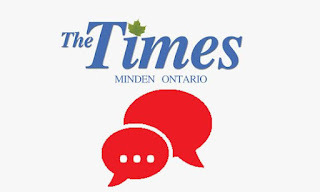 The changes that show we have moved from winter into spring are almost complete. Most ice has gone from lakes and ponds. The woods are brown and bleak without snow.Well, not totally brown and bleak. Bits of pale colour flicker in areas lucky enough to have young beech trees. These beeches stubbornly refused to drop their leaves last autumn and held them tightly to their branches throughout the brutal winter. Their blanched and shrivelled bodies dance in the breeze, fake signs of life in the still sleeping forest. Juvenile beeches, and some young oaks and hornbeam, don’t turn off the sap flow to their leaves in the fall. Most trees do, allowing a blocking layer of cells to form between the leaves and their branches, causing the leaves to die and fall.No one seems to know exactly why these juvenile trees don’t follow the usual process and insist on keeping their withering leaves in winter. They finally drop them in spring when new leaf bud growth forces the old leaves off their branches.There doesn’t seem to be any advantage to holding on to leaves in winter. It’s almost as if these young beeches simply don’t want to accept change.
The changes that show we have moved from winter into spring are almost complete. Most ice has gone from lakes and ponds. The woods are brown and bleak without snow.Well, not totally brown and bleak. Bits of pale colour flicker in areas lucky enough to have young beech trees. These beeches stubbornly refused to drop their leaves last autumn and held them tightly to their branches throughout the brutal winter. Their blanched and shrivelled bodies dance in the breeze, fake signs of life in the still sleeping forest. Juvenile beeches, and some young oaks and hornbeam, don’t turn off the sap flow to their leaves in the fall. Most trees do, allowing a blocking layer of cells to form between the leaves and their branches, causing the leaves to die and fall.No one seems to know exactly why these juvenile trees don’t follow the usual process and insist on keeping their withering leaves in winter. They finally drop them in spring when new leaf bud growth forces the old leaves off their branches.There doesn’t seem to be any advantage to holding on to leaves in winter. It’s almost as if these young beeches simply don’t want to accept change.Watching the wilted leaves flutter aimlessly in the breeze starts me thinking about the state of our human world. We need so many changes, yet like the young beeches we stubbornly hold on to old thinking, refusing to accept change.We won’t get needed change until we confront our leadership issues. Recent years have seen failed leadership throughout the world. COVID-19 and conflicts like Putin’s war have brought failed leadership clearly into focus. We have somewhat okay, but mediocre, leaders like U.S. president Joe Biden, Canada’s Justin Trudeau, and the clownish Boris Johnson of Britain. Decent enough folks, but not the strong, decisive leaders we need for these critical times of armed conflicts, climate change, infectious disease, food insecurity and refugee crises.It is our own fault. We have the leaders we deserve. We continue to elect them through a political party system no longer suitable for the times.
Our political party system is based on ideologies – my party’s thinking is better than yours. Yours stinks, so elect ours. We need to elect leaders who take the best thinking from wherever they can and build policies that change the serious problems facing our world. Leaders not beholding to any party or ideology. Leaders who do not fear making decisions that might cost them votes.Ukraine has provided an example of the type of leadership we need here. Ukraine president Volodymyr Zelenskyy addresses his people unshaven and in a T-shirt. He is genuine, saying what he is thinking, not what he thinks others might want to hear.When Biden offered to evacuate him from his war-ravaged country, Zelenskyy replied: “I need ammunition, not a ride.”Effective leaders speak plainly, but forcefully, unafraid to talk about their dreams and their mistakes. And, they just don’t talk about wrongs that need to be righted – they push ahead to fix them.Easter weekend provided an example of a leader making difficult change despite vigorous opposition from those opposed to change.On television was the 1968 religious movie The Shoes of the Fisherman, in which Anthony Quinn plays the newly-elected Pope Kiril who shocks the Catholic Church hierarchy by announcing that all the church’s wealth, including its art treasures, will be turned over to help feed starving people. Pope Kiril’s shocking decision to make change, instead of just talking about it, is pure Hollywood fiction. Fiction, but food for thought.Our society and election processes have become so tribal it is almost impossible to accomplish any important change. We need to change our thinking about leaders and how we elect them. Shocking as it may seem, maybe it’s time to toss out the political system that provides leadership and governance based on the thinking favoured by one group of people.We are all in this together and working together to elect honest, authentic and decisive leaders is the only way we will achieve the changes needed to solve the world’s problems. #
April 14, 2022
It has been more than 150 years since Fyodor Dostoyevsky ...
It has been more than 150 years since Fyodor Dostoyevsky wrote Crime and Punishment, but the main character of his famous novel could well have been today’s Russian president, Vladimir Putin.
Dostoyevsky’s Rodion Raskolnikov is a character who considers himself Superman, a superior person above the laws governing the rest of humanity. In the novel, his friend Razumikhin describes him as “sullen, gloomy, arrogant, proud; recently (and maybe much earlier) insecure and hypochondriac.”
Does that sound like someone who is in the news every day recently?
Sad Vlad Putin has spent years building his image as Superman, and is a domineering introvert lacking any sense of empathy. He is so much more superior to the rest of us that he doesn’t have to follow the same laws. A word from him and war begins, or all free speech is suspended.
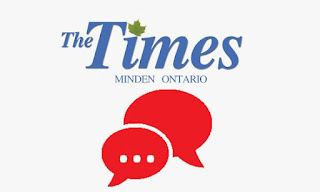
Dostoyevsky’s Raskolnikov kills an unscrupulous pawnbroker, justifying the crime as removing a louse from society. Putin is killing thousands of Ukrainians, justifying his crimes as removing neo-Nazi louses.
His ‘special military operation’ in Ukraine is not a war against another nation. It is a war against civilians; a deliberate slaughter of citizens, including women and children, who he treats as louses to be stomped. His plan appears to be to destroy Ukraine and scatter millions of Ukrainians throughout Europe, where the strains of so many refugees will create political upheavals.
Dostoyevsky’s Raskolnikov turns out not to be a Superman, just a mediocre human driven half mad by the guilt over the pawnbroker’s murder. He pushes away people trying to help him and finds himself more and more isolated.
Putin’s murders in Ukraine have left him isolated, throughout the world and to some extent at home. Thousands of Russian anti-war protesters have been detained by police since the invasion of Ukraine began Feb. 24.
Guilt and emotional upset eventually force Raskolnikov to confess to the pawnbroker’s murder. He is sentenced to eight years in a Siberian prison but later experiences a mental and spiritual rebirth with the help of a prostitute.
Surely Putin is experiencing some guilt and mental distress over his murderous campaign in Ukraine. How could any human not cringe at the murders of innocent people walking the streets, riding their bicycles, or waiting at train stations while trying to flee the country.
Perhaps someone who is physically and mentally ill?
Many close observers suspect that Putin is suffering from thyroid cancer, or possibly Parkinson’s Disease or a stroke. They say his unusual gait and finger movements are signs that something is wrong.
British media outlets have reported that Putin has been visited 35 times by a thyroid cancer specialist flown to his Black Sea retreat. They also have reported that he has been treated with steroids, and has been taking baths in deer antler blood.
Steroids are a common drug treatment for thyroid cancer and can cause anxiety and hallucinations. They also are known to cause bloating and facial puffiness, which some media reports have noticed in Putin.
The question now is how long before Putin’s transformation into Raskolnikov becomes complete. How long before Putin’s crime chapters end and the punishment chapters begin?
Evidence of Russian war crimes in Ukraine is being collected, and appears to be plentiful. Putin subordinates, and perhaps the man himself, might be charged as war criminals to be prosecuted before the International Criminal Court.
Putin probably never will be put on trial, and certainly never will see the inside of a prison cell. Things like that do not happen to the rich and powerful in today’s world.
And certainly, the mental and spiritual rebirth experienced by Raskolnikov in Crime and Punishment never will be experienced by Putin, the thin-skinned KBG thug who lacks substance and soul.
His punishment will come when his health problem, or the outrage of his own people, can no longer be contained.
Cancer can be contained, but not so the anguish of thousands of moms and dads whose soldier sons and daughters never returned from Ukraine. Nor can the disgust the world feels for Russia, which already had a reputation as a dark and ugly place.
April 7, 2022
Robins are harbingers of spring, which officially arrive...
Robins are harbingers of spring, which officially arrived almost three weeks ago. So where is the spring weather, and where are the robins?
It’s April, the daffodil month, and winter still refuses to loosen its headlock on much of the country.
Out my front window I see a lake with an ice cover seemingly determined to become permanent. A winter breeze scours it before climbing the shoreline embankment to fondle my house. Its icy fingers probe the smallest cracks and crannies and I feed the woodstove another log from the seriously diminished woodpile.
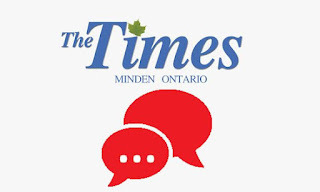
The weather forecasters offer little relief. They predict small shots of sun and warmth interspersed with bursts of abnormal cold and wet throughout April. We are getting one of those small warmer shots this week, but no real, sustained spring warmth is expected until May.
The winter-like conditions don’t mean we won’t be seeing robins for a while. There is growing evidence that more robins are staying in northern regions during winter.
The Cornell Lab of Ornithology says robins now are wintering in every U.S. state except Hawaii and every Canadian southern provincial area.
Also, data from feeder watch programs show robin visitation rates in northern Canada rising steadily. Average winter flock sizes have been increasing as well.
Program FeederWatch, where people count birds in their yards and post results online, reported robins at 59 per cent of Ontario sites during the 2020-21 winter. That compares with 27 per cent 1989, the project’s first year.
There is no solid evidence of why more robins are wintering in the north. One theory is simply that winters are becoming milder.
What we do know is robins are not afraid of winter weather. They maintain a body temperature of 40 Celsius no matter how cold it is. They shiver to generate body heat and fluff their feathers as a shield against cold and snow.
They can handle winter, but what they can’t handle is lack of staple foods that become unavailable in winter. Worms, bugs and other little invertebrates favoured by robins disappear when the cold arrives and snow covers the ground.
Many thousands of robins continue to migrate south in winter, but researchers are discovering that some are staying behind and surviving by changing their diet. They turn to summer leftovers – berries, currents and other small fruits left on vines, shrubs and trees long after summer showers have become snow storms.
Berries and other small fruits are not something we think about during winter. But if you go looking, you’ll find berries on trees and shrubs such as crab apple, juniper, hawthorn, yew, mountain ash, chokecherry and bearberry.
Seeds also are plentiful in winter but robins don’t digest seeds well and don’t have bills designed for cracking. That’s why they don’t often visit bird feeders.
Robins that stay north in winter are not seen as frequently as they are in summer. That’s because berries and other winter fruits are not abundant and the birds have to move about to find them.
Robins are not just symbols of spring, they represent different signs in different cultures – everything from the promise of spring, to the threat of storms and even death.
Many Indigenous people have viewed the robin as a spiritual bird, a symbol of hope and rebirth and a sign of love and good family life. Some have seen robins as spirit guides helping them to understand visions.
Robin symbolism is found throughout Christianity. There is one story, wrongly attributed to the Bible, which tells of a little bird plucking a thorn from Christ’s forehead when he was being crucified. A drop of Christ’s blood fell on the bird’s breast, staining it red. That bird became the red-breasted robin.
Mother Teresa, the missionary named Saint Teresa of Calcutta by the Catholic Church, related that legend in her 1977 book No Greater Love.
“Each of us should try and be that bird – the little robin,” she wrote. “When we see someone in pain, we must ask ourselves: What can I do to give them comfort?”
Whatever the symbolization, we’ll soon be seeing robins hunting bugs and worms on grassy patches and we’ll know that a long, tough winter finally has given way to summer sunshine and warmth.
#
March 30, 2022
The absolutely last place I ever expected to learn anyth...
The absolutely last place I ever expected to learn anything important was sitting in front of the television watching the Academy Awards.
I gave up watching the annual awards show years ago, finding it silly and boring. Hollywood and its elites at their worst.
I’m not the only one. Viewership of the awards show has declined over the past decade with the 2021 show seeing a 56-per-cent drop in viewership from the previous year.
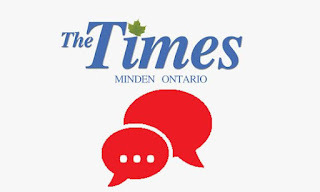
But there I was Sunday night, sprawled in my TV chair, watching unkempt and badly dressed men (and very loosely clad women) movie stars smirking at badly told jokes.I ended up in front of the TV because it was a bitterly cold night (well into the minus 20s considering the wind chill) and I needed to stay up late feeding the woodstove so it would build good coals for overnight.
And that’s when I learned just what an angry and violent place our world has become.
My eyelids were starting to droop when Will Smith, who won the best actor Oscar, jumped from his seat in the audience, strode to the stage and slapped show host Chris Rock in the face.
At first, I thought it was a pre-planned piece of awards show silliness, but it was a real slap, delivered with real anger. Smith returned to his seat, and shouted “keep my wife’s name out of your (expletive) mouth.”
Rock, a stand-up comedian, had made a very stupid attempted joke about Smith’s wife Jada Pinkett Smith, who appeared at the show with a shaved head look.
“Jada, I love you. G.I. Jane 2, can’t wait to see it . . . ,” Rock cracked to Pinkett Smith.
It was a reference to the 1997 GI Jane movie in which Demi Moore shaved her head to portray a Navy Seal recruit. Pinkett Smith shaved her head because she has been diagnosed with alopecia, a hair loss condition.
Not very funny and easy to understand why Smith was upset, although his reaction surely would have been calmer and more reasonable in a less angry world.
It was a scene that supports a 2020 – 21 Gallup poll finding that the world is becoming more unhappy and angrier.
The poll, called the Global Emotions Report, surveyed 160,000 people in 116 countries and found the world a sadder, angrier, more worried and stressed-out place than any time in the last 15 years.
We read, hear and view stories about how angry and intolerant the world has become. But when actors start assaulting each other live on international television you know that intolerance and anger is out of control.
The Academy Awards show was followed by late night television news reporting more doses of anger and intolerance. The lead item was angry reaction to U.S, President Biden saying Russian president Putin “cannot remain in power.”
The media and others made this into the U.S. president calling for regime change in Russia. It wasn’t. It was simply Biden’s opinion that Putin is a brutal butcher who should not have power over anything.
That’s what he thinks, that’s what he said out loud. So, what’s to be shocked or angry about?
However, in an angry and intolerant world there is no time nor patience for thinking things through and trying to understand what someone has said or done. Contradiction and yelling are quicker and easier.
What’s interesting – and hopeful – about Sunday’s Academy Awards is the contradiction between the show itself and the movies nominated for awards.
The show participants appeared to be a stressed, unhappy bunch – angry and violent in the case of Will Smith; uninformed or intolerant in the case of Chris Rock.
Many of the movies being celebrated, however, were about how understanding and love can overcome anger, intolerance and tribalism to make for a better world.
CODA, King William and West Side Story are movies with sadness, anger and violence but they give viewers a sense of hope for a better future. Even The Power of the Dog, which I thought was a bad film while others loved it, shows us that accepting and struggling to overcome our problems can make the world a less angry and better place for all.
#
March 23, 2022
There are a couple dozen versions of Psalm 22:20, dependi...
There are a couple dozen versions of Psalm 22:20, depending on what Bible you read.
After watching the Oscar-nominated movie The Power of the Dog, I have a version of my own:
“Deliver me from bad storytelling, and my precious time from pretentious filmmakers.”
Netflix’s much-ballyhooed movie about toxic masculinity is pretentious and really bad storytelling. Thomas Savage, author of the 1967 novel, must be squirming in his grave over how director Jane Campion fuzzified his story.
The Power of the Dog is expected to win big Sunday night at the annual Academy Awards. It has been nominated for 12 Oscars, including Best Picture and Best Director.
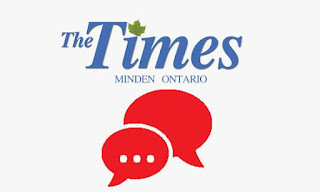
If it does, we’ll have yet another example of a world that has lost focus.
This movie has no focus. It’s based on a good story told so vaguely that it is hard to figure out.
Many movie goers like a movie that has them a bit befuddled and trying to figure it out. The good movies leave some clues that help solve the puzzle and make us proud at doing so. This one leaves us so few clues that we walk away frustrated.
Campion has chosen to satisfy herself instead of her audience. She made a pseudo-intellectual film designed to gather prestige, critical acclaim and awards. The audience gets a collection of underdeveloped pieces that never come together to tell a powerfully interesting story.
The greatest fault of The Power of the Dog is its lack of energy. It’s like looking into a bowl of freshly-cooked spaghetti.
It is sort of a western that has been criticized as a slow horseback ride. The opening 45 minutes would cure the worst cases of insomnia.
Strong criticism has come from American western actor Sam Elliott who described it in words that cannot be used here. He also said the cowboys in the film are like Chippendales dancers who “wear bow ties and not much else.”
“They’re running around in chaps and no shirts.”
Good stories become great stories when left alone to tell themselves. They become lesser stories when self-centred filmmakers try to manipulate them into something that they are not.
Some folks who liked The Power of Dog tell me I need to watch it again to better understand it. Sorry, but once is enough. It has great cinematography and some decent acting, but wet noodle story treatment.
The only other Oscar-nominated film I’ve seen this year is West Side Story, the recent adaptation of the 1961 musical classic that won 10 Oscars. This new one, done by Steven Spielberg, is nominated for seven.
It is a great movie because Spielberg and company have not tried to turn the basic story into something it isn’t. They’ve let it tell itself, making changes needed to put it into the 21st century, but the basic story, and its important messages, are the same.
One brilliant change was the replacement of drugstore owner Doc with his widow, Valentina, played by 90-year-old Rita Moreno, who won a best supporting actress Oscar for her role as the fiery Anita in the 1961 version.
In the new version Moreno sings (in her own voice) “Somewhere,” the iconic ballad that yearns for “a new way of living . . . a way of forgiving.” In the original movie, it was a duet by star-crossed lovers Tony and Maria.
Unlike The Power of the Dog, West Side Story leaves no audience puzzled. Its themes of tribalism and bigotry are crystal clear. It is a well told story of a world torn apart by racism, poverty and lack of hope.
It is, however, a story in which leave opens the possibility that love can prevail and make the world a better place.
I won’t guess which movies will take away Oscars Sunday night. It doesn’t really matter to me. Awards are simply awards based on someone’s feelings.
As my mother use to say about such things:
“Everyone to their own taste, said the old lady as she kissed the cow!”
What really matters is that great movies are being made from great stories. The Power of the Dog, in my view, is not one of them.
March 16, 2022
By Jim Poling Sr.From Shaman’s Rock“It’s like déjà vu al...
By Jim Poling Sr.
From Shaman’s Rock
“It’s like déjà vu all over again,” American baseball star Yogi Berra was famous for saying.
Yogi has been gone for a while now, but his words live on and have never rang truer than during the continuing Russian bombardment of Ukraine and slaughter and displacement of its people.
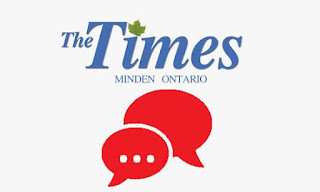
This week is the 82nd anniversary of another Russian attempt to invade and enslave a neighbour. That invasion, a mirror image of what Mad Vlad is attempting in Ukraine, became known as the Winter War.
The news media, certainly the sites that I follow, have not mentioned the Winter War and its similarities to what is happening now in Ukraine. However, John Ward, a journalism colleague with a sharp mind for history honed through 46 years at The Canadian Press, reminded some of us.
The Winter War began on Nov. 30, 1939 when Russia (then the Soviet Union) did some false flag shelling as a pretext for invading Finland. The Soviets said they needed some Finnish territory to secure their northern borders, but research has indicated the plan was to capture all Finland and install a Communist puppet government.
Often fought in minus 40 to minus 45 Celsius temperatures the war lasted only 105 days, ending March 13, 1940. The Soviets suffered heavy losses and worldwide disdain before withdrawing, while agreeing to a peace treaty that gave them nine per cent of Finnish territory.
The poor performance of the Red Army encouraged Adolf Hitler to launch Operation Barbarossa, code name for an invasion of the Soviet Union. The invasion was not successful but the Soviets suffered more than two million casualties.
If you held a mirror to the Finland invasion, you would see Ukraine today – bombed residences, dead women and children and a cruel Russian leader lying through his teeth to justify the horror.
The Soviets sent 450,000 troops against Finland but Finnish guerrilla warfare held them back. Like in Ukraine, the Soviets had air superiority, dropping 12,000 bombs on one city alone.
Helsinki, Finland’s capital, was bombed eight times during the Winter War. The Soviets dropped 350 bombs on the city, killing 97 people and wounding 260. Fifty-five buildings were destroyed.
The Soviets lied about the bombing. They said they bombed airfields only, just like today when the Russians say they bomb only military targets. We all have seen the television footage of the bombed apartment buildings and hospitals in Ukraine.
Vyacheslav Molotov, the Soviet propaganda minister back in 1940, said his airplanes were not dropping bombs; they were dropping bread baskets to feed hungry Finns.
The Finns returned the favour. They lured Soviet equipment into range where they hit them with petrol bombs – glass bottles filled with flammable liquids.
It was the Finns who gave petrol bombs the name Molotov cocktail, which Ukrainians are making today in large quantities. One Ukraine brewery now has stopped producing beer and put its people to work turning out Molotov cocktails.
Another similarity between the Finland and Ukraine invasions is the large numbers of volunteers wanting to fight the invaders. An estimated 12,000 foreign volunteer fighters signed up to help the Finns repel the Soviets
Ukraine President Volodymyr Zelenskyy said recently that more than 16,000 foreigners had volunteered to help his people this time. He did not say how many actually have arrived in the country.
Ukraine’s foreign ministry estimates that 20,000 people from 52 countries volunteered to fight in Ukraine during the first week of the Russian invasion.
Numbers like that indicate that while the Russians may win the war, they’ll not win a peace to go with it.
It is doubtful that tens of thousands of volunteers can stop the Russians from taking Ukraine, or other countries that once were part of the Soviet bloc. Which raises the spectre of a wider war in Europe and the possibility of a Third World War. The second ended with nuclear bombs.
There also is the question about whether the 2.7 million displaced Ukrainians will ever return home. And, if they can’t, where will they live?
The future does not hold any really hopeful scenarios. As Yogi also said:
“The future ain’t what it used to be.”
#



